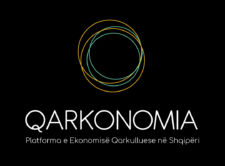Butterfly diagram
The circular economy system diagram, known as the butterfly diagram, illustrates the continuous flow of materials in a circular economy. There are two main cycles – the technical cycle and the biological cycle.
In the technical cycle, products and materials are kept in circulation through processes such as reuse, repair, remanufacture and recycling.
In the biological cycle, the nutrients from biodegradable materials are returned to the Earth to regenerate nature.

The biological cycle of the butterfly diagram
On the left-hand side of the butterfly diagram is the biological cycle, which is for materials that can biodegrade and safely return to the earth. This cycle mainly concerns products that are consumed, such as food. However, some other biodegradable materials, such as cotton or wood, may eventually make their way from the technical cycle into the biological cycle once they have degraded to a point where they can no longer be used to make new products.
The biological cycle describes the processes that return nutrients to the soil and help regenerate nature.
Regeneration
At the heart of the biological cycle is the concept of regeneration. It is the third principle of the circular economy. Instead of continuously degrading nature, as we do in the linear economy, in the circular economy we build natural capital. We employ farming practices that allow nature to rebuild soils and increase biodiversity. Our wider food system returns biological materials to the earth rather than wasting them. No longer should our focus be simply on doing less harm to the environment, but on how we can actively improve it.
Farming
We can manage farms, and other sources of biological resources such as forests and fisheries, in ways that create positive outcomes for nature. These outcomes include, but are not limited to, healthy and stable soils, improved local biodiversity, improved air and water quality, and storing more carbon in the soil. They can be achieved through a variety of practices and can together help regenerate degraded ecosystems and build biodiversity and resilience on farms and in surrounding landscapes.
To achieve these ends farmers may draw on several different schools of thought, such as regenerative agriculture, restorative aquaculture, agroecology, agroforestry, and conservation agriculture, to help them apply the most appropriate set of practices to drive regenerative outcomes on their farms.
Once food is harvested and consumed, the nutrients in organic waste streams can be collected, and returned to the soil via processes like composting and anaerobic digestion. If nutrients are not returned, soil becomes depleted, meaning farmers are forced to rely increasingly on chemical fertilisers to keep farmland productive.
Composting and anaerobic digestion
Composting is the microbial breakdown of organic matter in
the presence of oxygen. It can be used to turn food by-products and other biodegradable materials into compost, which can be used as a soil enhancer, returning valuable materials to farmland in place of artificial fertilisers. The process is biological and involves naturally occurring microorganisms, such as bacteria and fungi.
Anaerobic digestion is another way of recovering the materials embedded in organic waste. As with composting, the process involves microorganisms, but in this case in the absence of oxygen. Anaerobic digestion produces biogas and a solid residual or ‘digestate’. This digestate can be applied directly to the land or composted and used as a soil amendment.
Biogas, made primarily of methane and carbon dioxide, can be
produced from both composting and anaerobic digestion and used as a source of energy similar to natural gas. This type of energy recovery is part of a circular economy since it is a byproduct of the process of returning organic material to the soil.
Cascades
These loops of the biological cycle make use of products and materials already in the economy. This could mean, for example, using food by-products to make other materials, such as textiles made from orange peel, or designing new food products using ingredients usually considered waste, like ketchup made from banana peel. It could also mean using the material for applications such as animal feed. When products or materials can no longer be used, they move to the outer loops of the biological cycle where they are
returned to the soil.
Extraction of biochemical feedstock
Taking both post-harvest and post-consumer biological materials as feedstock, this step involves the use of biorefineries to produce low volume but high value chemical products. On top of this, biorefineries can
produce a range of other valuable products from organic materials through a series of steps. These processes could consecutively produce, for example, high value biochemicals and nutraceuticals followed by bulk biochemicals.
The technical cycle of the butterfly diagram
On the right-hand side of the butterfly diagram is the technical cycle, relevant for products that are used rather than consumed.
The diagram shows that smaller inner loops are surrounded by the larger outer loops. These inner loops are where most value can be captured because they retain more of the embedded value of a product by keeping it whole. Take a smartphone, for example – a working phone is worth more than the sum of its parts because the time and energy that went into making it is not lost. Therefore, inner loops like sharing, maintaining, and reusing should be prioritised above the outer loops that see the product broken down and remade. These loops also represent a cost saving to customers and businesses as they make use of products and materials already in circulation, rather thaninvesting in making them new.
The outermost loop, recycling, is therefore the stage of last resort in a circular economy, because it means losing the embedded value of a product by reducing it to its basic materials.
It is important to bear in mind from the outset that each of these steps will work best if the products are designed for that step. That may mean making items intended for sharing or reuse more durable so they withstand intensive use, it may mean designing products so that they can easily be repaired, designing them to be modular so components can be replaced and remanufactured, or designing products with materials that can easily be separated for recycling. It is also important to design for multiple loops, for example making a repairable product from recyclable materials.
Sharing
Sharing is the first port of call in the technical cycle and, while not appropriate for all products in the economy, it has the power to dramatically increase the utilisation of many products.
A great example of this is tools. You may have heard the stat: the average power drill is used for just 13 minutes in its entire life. That is shocking underutilisation – and yet still many of us own one. Why not share? Community tool libraries, like this one in Toronto, are a great way to facilitate this. Users pay by subscription, gain access to higher quality tools than they would buy for themselves, and declutter their home at the same time.
Libraries like this are popping up in communities all over the world and not only for tools.
Sharing can be applied to a variety of product types. There are a growing number of platforms that allow users to wear clothes from shared wardrobes. There are car-sharing systems in cities all over the world. There are platforms like Airbnb that allow people to share spaces. And there are insurance companies that provide micro-insurance for those looking to earn extra money by listing their items on peer-to-peer platforms but are worried about potential damage.
There are also platforms designed to enable businesses to reap the rewards of the sharing economy, such as Rheaply, a B2B service that allows organisations to make the most of equipment that would otherwise remain idle.
Maintaining
If sharing is a way to increase the intensity of productuse, another way to maximise the value of a product is by prolonging its usable
life. Maintenance is an important way of keeping products at a high quality and guards against failure or decline.
When you think about maintenance, you might think about taking a car for a service, or shoring up your home against the elements, but maintenance can be applied to most products that suffer wear and tear. For example, Clothes Doctor empowers people to look after their clothing by sharing knowledge about care and maintenance.
Reusing
The next loop in the technical cycle of the butterfly diagram is reuse. Like sharing and maintaining, this step keeps products in use in their original form and for their original purpose. Reuse business models are cropping up all over the economy, notably in packaging. Reusable packaging is one of the most effective ways of tackling packaging waste, particularly plastic, and is being adopted by businesses across industries, from food and drink to cosmetics and home cleaning.
Another booming reuse industry is in clothing. More and more people are selling their unwanted clothing and buying clothes from resale platforms, often at a fraction of the cost of buying new. This displaces the need for a new item to be made and stops an unwanted item going to waste.
Redistributing
Redistribution is another way to keep products in use and stop them becoming waste. By diverting products from their intended market to another customer, the product is put to valuable use. For example, a fashion brand could redistribute unsold clothing from one store to another.
Refurbishing
Returning products to good working order is a way to restore their value. This could include repairing or replacing components, updating specifications, and improving cosmetic appearance.
Refurbishing can be carried out by individuals on their own products, or by specialists. The Right to Repair movement aims to make changes to regulations so that products are designed in a way that makes it possible for users to repair them by themselves.
There are countless examples of companies working to keep products in use through refurbishment. A good example is in the tech industry, where there are many companies buying up used items such as mobile phones, refurbishing them, and selling them on at a fraction of their original price.
Remanufacturing
The next stage of the technical cycle is remanufacturing.
This is done when products cannot remain in circulation in their current state and need more intensive work to be used again. Remanufacturing involves re-engineering products and components to as-new condition with the same, or improved, level of performance as a newly manufactured one. Remanufactured products or components are typically provided with a warranty that is equivalent to, or better than, that of the newly manufactured product.
It may require more investment in plant and machinery than do the inner loops of the technical cycle, but it means that products and
components do not become waste and can remain in the economy, representing a cost saving to businesses and customers.
China has adopted the circular economy as a national priority since the late 2000s and has defined vehicle remanufacturing as a strategic sector.
Recycling
The final step in the technical cycle is recycling. This is for when a product can no longer be used and is beyond refurbishment or remanufacture, or isn’t suitable for those steps. It is the final way of keeping in use the materials from which the product is made so they don’t become waste.
With recycling, the embedded value of a product – the time and energy invested in making it – is lost, but the value of the materials is retained. Recycling means transforming a product or component into its basic materials or substances and reprocessing them into new materials.
Designing for recycling is important for all products in the technical cycle, but especially for items that are not suitable for the other steps in the cycle. These items include single-use packaging, which is itself only appropriate when it cannot be designed out and reusable alternatives are not possible.
© 2025 Qarkonomi. Created with ❤ using WordPress and Kubio



